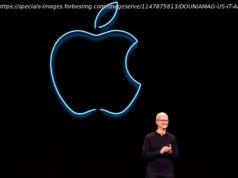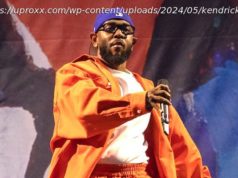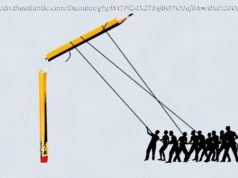Episode VIII brought a number of unique challenges.
There’s been a lot of Star Wars recently.
When The Last Jedi hits theaters on Friday, it will be the third Star Wars movie in as many years, twice the rate of theatrical output as either of the previous trilogies. Even accounting for how Rogue One: A Star Wars Story wasn’t a “Saga” entry (meaning not part of the core series), it’s a release schedule that outstrips anything that’s come before. That’s notable for a franchise that has been known at least partly by its scarcity.
Despite how audiences seem pretty willing to accept frequent franchise entries (Marvel Studios, which like Lucasfilm is owned by Disney, put out six films between 2013 and 2015 alone), the threat of burnout has to weigh heavy on the minds of studio execs. How much is too much? Will older audiences, who are used to waiting 10 or 15 years between series, keep turning out every December? What’s the right “Saga” versus “Story” balance?
To account for all that, the cryptically titled The Last Jedi (wearing an “Oxford Comma, Jerks” sweatshirt in a college writing class wouldn’t have triggered more debate around grammar) has been marketed in a number of interesting ways, some of which take advantage of the latest technology and some of which clearly show adjustments being made from one campaign to the next. He’s After Someone Named Skywalker
One of the most notable elements of the marketing for The Force Awakens was the absence of Luke Skywalker. While Mark Hamill did some pre-release press and publicity, Luke was markedly absent from all the posters, trailers and commercials for the movie, the character’s role in the story remaining largely a mystery.
This time around, Luke is positioned as a central figure in the story, shown on all those marketing elements. Hamill has brought his charm and wit to the publicity efforts, talking about his history with the character and his love for the fans. While Leia, Han, Chewie and other original characters were included in The Force Awakens’ marketing, Luke’s omission meant, at least in the “Saga” films, that the focus wasn’t on the Skywalker family.
I’ve Got to Get Back to Jakku
While “Where’s Luke?” was the question of the marketing for The Force Awakens, “#WheresRey” was the question of the consumer products campaign. Rey was so central to the rest of the marketing that her absence from many tie-in consumer products seemed by critics to be rooted in a belief that either a) boys wouldn’t be interested in toys including women, or b) girls don’t by action figures. Eventually Disney execs tried to explain it as an effort not to spoil the film, but many remained suspicious.
Throughout the campaign for The Last Jedi, though, female characters have been right on the front line. It’s clear from the trailers that it’s Rey’s journey we’re continuing to follow as she hovers between the Light and Dark sides of the Force, pulled in one direction by Luke’s mentorship and in the other by the power of Kylo Ren and Supreme Leader Snoke.
It’s not just Rey, though. Laura Dern joins the Star Wars universe as Vice Admiral Amilyn Holdo, a Resistance leader with a passion for purple space capes. And relative unknown Kelly Marie Tran, who plays the new hero Rose Tico, has been the focus of one interview after another, appearing with all the big names in the cast on talk shows, panels and more. The haters who labeled Rey as a “Mary Sue” in The Force Awakens are going to have a lot more to be upset about, as it’s clear a galaxy far, far away has more than one heroic, capable woman in it.
… In Under 12 Parsecs (Months)
As I mentioned and have written about before, The Force Awakens had the luxury of being first out of the gate in the new series of films produced after Disney acquired Lucasfilm. The campaign was able to stretch out over more than a year, with the first trailers and posters appearing around Thanksgiving 2014 to promote a December 2015 release. Story elements and publicity beats could come in fits and bursts in the intervening 13 months.
Since then, the hype window has shrunk to roughly eight months. That was the case for Rogue One, and now for The Last Jedi, whose first teaser didn’t appear until April of this year. That pattern will likely hold true for next year’s Solo: A Star Wars Story as well. Each film can’t overlap with the one before it, starting only after the previous film has hit home video. Movies of this magnitude are routinely teased 12-18 months in advance, meaning Disney had to consolidate things significantly.
The Regional Governors Now Have Direct Control
In writing about what went into the recent success of Thor: Ragnarok, I mentioned there’s been a wave in Hollywood of directors leaving big franchise productions recently. Star Wars has provided more than its share of examples of this.
● Josh Trank: Was supposed to direct one of the spinoffs. Lleft either of his own volition or because of the fallout from the troubled production of 2015’s Fantastic Four. ● Phil Lord and Chris Miller: Were directing Solo: A Star Wars Story but exited mid-production because of creative differences, with Ron Howard finishing things up. ● Gareth Edwards: Did finish Rogue One, but did so amid numerous reports of reshoots and editing to fix substantial story problems. ● Colin Trevorrow: Was slated to direct 2019’s Episode IX but was let go, at least in part because of the critical savaging inflicted on his film The Book of Henry.
So, it’s more the exception than the rule that The Last Jedi director Rian Johnson not only finished the film but has been out there hyping it up. He’s been the movie’s cheerleader-in-chief, doing his own interviews and appearing alongside the cast elsewhere.
Johnson has followed the same “a couple indie movies and now a blockbuster” path of other directors, but he’s making it work, talking repeatedly about how his original script, with a few changes here and there, is just what was shot. Not only that but he made such a good impression with studio executives that they handed him the keys and told him to go create a whole new Star Wars trilogy of his own design. Show Me Again… The Power of Darkness
As a general rule, the second chapter in any Star Wars trilogy is the dark one. That’s why in Clerks, Dante pegs The Empire Strikes Back as his favorite, because “that’s what life is… a series of down endings.” In the prequel trilogy, Attack of the Clones ends with Anakin losing a whole arm while all-out war breaks out across the galaxy. These middle chapters are when we feel hope may be lost.
That’s exactly how Disney has been positioning The Last Jedi. The marketing has made it clear that these are dark times we’re entering. The trailers have shown Rey leaning toward both sides of the Force, Kylo Ren targeting a ship that his mother Leia is aboard during a battle, and more. There was an entire series of posters that draped each individual character in red, hinting that blood would be spilled. Heck, even Luke seems depressed, intoning at the end of the first trailer that he believed it was time for the Jedi to end.
We’ve No Time for Our Sorrows, General
One shadow that has hung over the entire campaign was the late 2016 passing of Carrie Fisher. While that did lead to a fuller appreciation of Fisher’s acting and writing talents, her passing was a blow because she’d been such a damned delight while promoting The Force Awakens. Because Leia’s inclusion was well known, she was able to be her sharp-witted, brutally insightful self on the publicity circuit.






